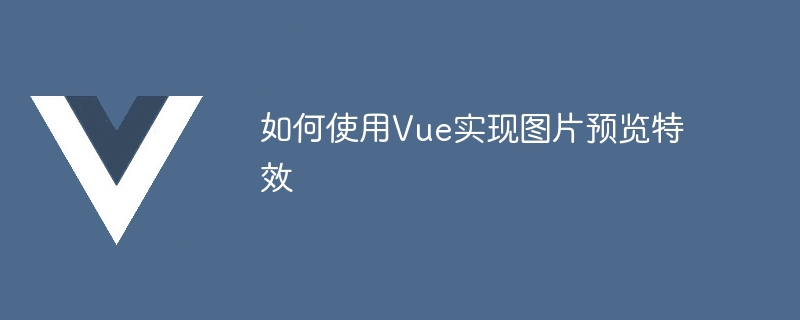所属分类:web前端开发

如何使用Vue实现图片预览特效
引言:
在现代的网页设计中,图片预览特效已经成为了一种常见的需求。通过图片预览,可以提升用户体验,让用户能够更全面地了解图片内容。Vue作为一种流行的前端框架,提供了丰富的组件和响应式数据处理能力,非常适合实现图片预览特效。本文将介绍如何使用Vue来实现一个简单的图片预览特效,并提供相应的代码示例。
步骤一:创建Vue组件
首先,我们需要创建一个Vue组件,作为图片预览的容器。在该组件中,我们将使用Vue的动态数据绑定和事件绑定来实现图片预览的交互效果。
示例代码:
<template>
<div>
<img :src="currentImage" @click="showPreview">
<div v-if="show" class="preview-container">
<div class="preview-image">
<img :src="currentImage">
</div>
<span class="close-button" @click="closePreview">关闭</span>
</div>
</div>
</template>
<script>
export default {
data() {
return {
currentImage: '',
show: false
}
},
methods: {
showPreview() {
this.currentImage = '图片地址' // 图片地址通过v-for循环动态绑定
this.show = true
},
closePreview() {
this.show = false
}
}
}
</script>
<style scoped>
.preview-container {
position: fixed;
top: 0;
left: 0;
width: 100%;
height: 100%;
background-color: rgba(0, 0, 0, 0.8);
display: flex;
justify-content: center;
align-items: center;
}
.preview-image {
max-width: 80%;
max-height: 80%;
}
.close-button {
position: absolute;
top: 10px;
right: 10px;
color: #fff;
cursor: pointer;
}
</style>步骤二:使用图片预览组件
在需要使用图片预览的地方,我们可以将上述的图片预览组件进行引入,并使用v-for指令来循环生成多个图片预览。
示例代码:
<template>
<div>
<preview-image v-for="image in images" :key="image.id" :src="image.url"></preview-image>
</div>
</template>
<script>
import PreviewImage from '@/components/PreviewImage.vue'
export default {
components: {
PreviewImage
},
data() {
return {
images: [
{ id: 1, url: '图片地址1' },
{ id: 2, url: '图片地址2' },
{ id: 3, url: '图片地址3' }
]
}
}
}
</script>总结:
通过上述的步骤,我们可以使用Vue很容易地实现一个简单的图片预览特效。通过点击图片触发预览,再点击关闭按钮关闭预览,实现了基本的交互效果。当然,根据实际需求,我们还可以对图片预览进行更多的定制和改进,比如添加图片缩放、旋转等功能。希望本文能够帮助读者理解如何使用Vue来实现图片预览特效,并鼓励读者在实际项目中探索更多创新的交互效果。